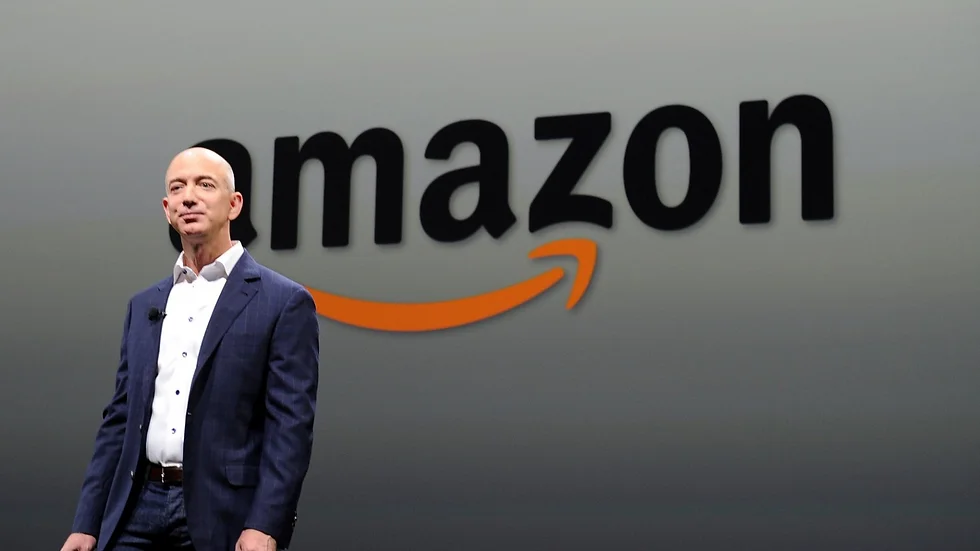- Suneel Mekala
- April 2025
- Mobile Apps
Introduction
Amazon started as an online bookstore in 1994, but today, it’s a global tech giant leading in e-commerce, cloud computing, and artificial intelligence (AI). How did Jeff Bezos transform a simple book-selling website into a trillion-dollar empire? The answer lies in Amazon’s relentless focus on customer obsession, innovation, and long-term thinking.
In this blog, we’ll explore Amazon’s key business strategies that fueled its growth—from dominating e-commerce to pioneering AI-driven technologies like Alexa, AWS AI services, and cashier-less stores.
1. The Early Days: Disrupting Retail with Books
Amazon’s journey began with a simple idea—sell books online. At a time when physical bookstores ruled, Amazon offered:
Unbeatable selection (millions of titles vs. a store’s limited shelf space)
Lower prices (thanks to reduced overhead costs)
Convenience (home delivery, later enhanced by Prime)
This customer-first approach set the foundation for Amazon’s expansion into other product categories.
2. The Flywheel Effect: How Amazon Scaled Rapidly
Amazon’s growth was driven by its “flywheel” strategy:
Lower Prices → More Customers → Higher Sales
Higher Sales → Better Supplier Deals → Lower Costs
Lower Costs → Reinvestment in Innovation → Better Customer Experience
This self-reinforcing cycle allowed Amazon to expand into electronics, apparel, and eventually everything from A to Z.
3. Beyond E-Commerce: AWS & The Cloud Revolution
In 2006, Amazon launched Amazon Web Services (AWS), turning its internal infrastructure into a profit machine. AWS now dominates cloud computing with:
AI & Machine Learning tools (SageMaker, Rekognition, Bedrock)
Scalable cloud solutions for startups and enterprises
A major revenue driver (AWS contributes ~40% of Amazon’s operating income)
AWS’s success proved that Amazon wasn’t just a retailer—it was a tech innovator.
4. AI & Automation: The Next Frontier
Amazon’s AI investments have reshaped multiple industries:
A. Alexa & Voice Commerce
Amazon’s AI-powered voice assistant became a household name.
It pushed smart home integration and voice shopping.
B. Cashier-less Stores (Amazon Go & Just Walk Out Tech)
Uses computer vision and AI to eliminate checkout lines.
Expanding to third-party retailers, changing the future of retail.
C. AI in Logistics & Fulfillment
Robotics-powered warehouses speed up deliveries.
AI-driven demand forecasting optimizes inventory.
D. AWS AI Services
Generative AI (Bedrock, Titan models) competes with OpenAI & Google.
AI tools for businesses (e.g., CodeWhisperer for developers).
5. Challenges & Future Outlook
Despite its dominance, Amazon faces:
Regulatory scrutiny (antitrust concerns in the US & EU)
Competition (Walmart in retail, Microsoft & Google in AI/cloud)
Workforce concerns (automation vs. job displacement)
Yet, Amazon continues to invest aggressively in AI, space (Project Kuiper), and healthcare, ensuring it stays ahead.
Conclusion: Lessons from Amazon’s Strategy
Amazon’s success boils down to:
✅ Relentless customer focus
✅ Bold bets on tech (AWS, AI, automation)
✅ Long-term thinking over short-term profits
As AI reshapes industries, Amazon’s ability to innovate and adapt will determine whether it remains on top.
What’s Next for Amazon?
Will AI-powered drones, quantum computing, or healthcare disruptors be Amazon’s next big move? One thing is certain—Amazon never stops evolving.
What do you think about Amazon’s AI strategy? Share your thoughts in the comments!

